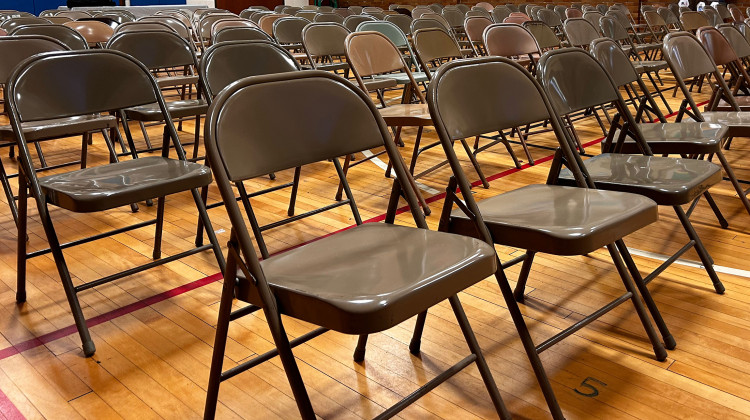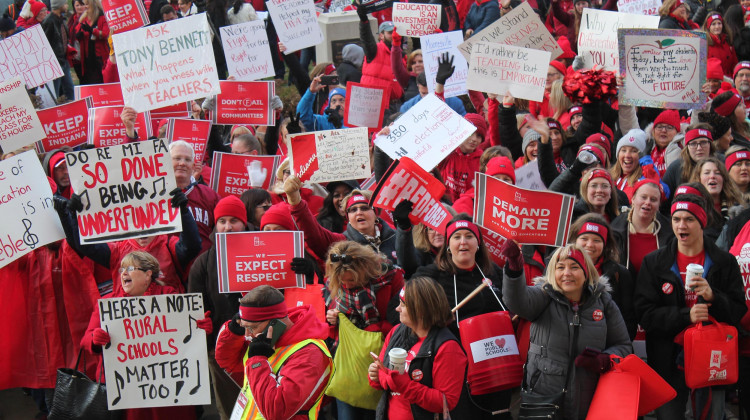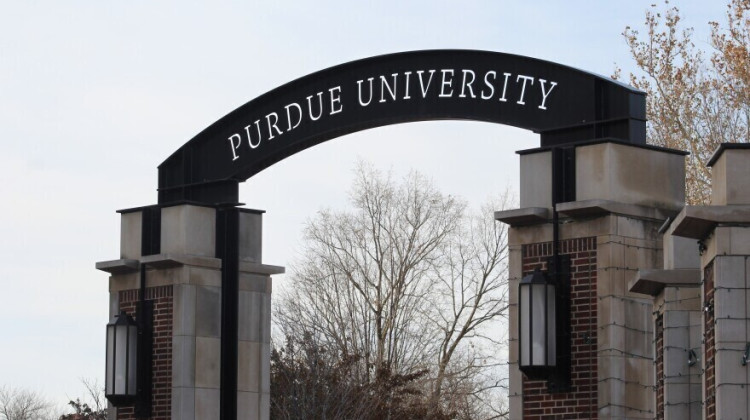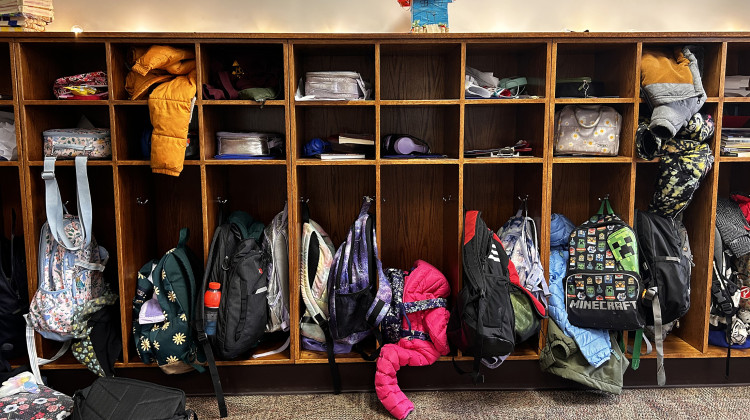
A WFYI analysis found 187 Indiana school districts suffered overall enrollment losses to school choice policies even if they gained enrollment from students choosing to transfer into the district.
Eric Weddle / WFYISchool choice has never been more popular in Indiana. Parents and caregivers have more access and options than ever to pick what they believe is the best learning environment for their children.
A WFYI analysis of education data found nearly 1 in 5 students attend a school other than their home district — either a private school with aid from a state voucher, a public charter school or a district other than the one in which they live. That’s up from about 1 in 13 a decade earlier.
This freedom to choose creates vigorous competition for students and winners and losers among traditional public school districts. In a state where school funding follows the student, losing even one to another school district, charter school, or private school can result in financial losses for the home district.
The analysis reveals roughly two-thirds of Indiana’s 290 districts had an overall enrollment loss in the just completed academic year due to school choice policies. The primary cause is a student transferring from one public school district to another district. Of the top 20 districts losing students, just one was more impacted by families using a voucher to attend private parochial or non-religious schools even as the Choice Scholarship Program reached an historic level this year.
The WFYI analysis of the 2023-2024 academic year also found:
- Fewer students used a publicly-funded voucher to attend private parochial or non-religious schools compared to a public option. Just 76 public districts, or 26.2 percent, lost more students to private schools than they gained or lost from transfers.
- 111 public districts, or 38.3 percent, lost more students than they gained to a combination of other districts and charter schools.
- 103 public districts, or 35.5 percent, gained more students who transferred from other districts compared to the students lost to all choice options combined.
- Districts with overall enrollment loss due to choice had a higher average percentage of students of color and students who qualified for free or reduced price lunch than districts that gained enrollment from choice.
These shifts in how parents choose to educate their children are the result of more than 20 years of Indiana policies expanding school options beyond a family's neighborhood school. Republican lawmakers have supported proponents' reasoning that families should educate their children how they want with the support of state funding. Opponents continue to question the equitable access in school choice and the financial and academic impacts on traditional schools and students.
The data analysis examined state enrollment data and transfer data by sorting schools into different types of impact based on choice participation and student body demographics. It also examined annual voucher reports and state budget data to see how private vouchers impacted public districts’ finances. Financial data for student transfers between public schools was not available.
The financial impact
The analysis found 187 districts suffered overall enrollment losses to choice even if they gained enrollment from students choosing to transfer into the district. Because the state funds schools on a per-student basis, it's possible each of these districts lost some amount of funding from its education fund.
The education fund is state appropriated money used to pay for classroom expenses, such as salaries for teachers, certain staff and academic programs.
Of these districts, 14 lost more than 10 percent of their education fund to vouchers alone, according to an analysis of voucher and district budget data. The average loss among these districts was $12.7 million, or 13.4 percent.
The state does not publish corresponding financial data for students who enroll at a public school that is not in their home boundary.
South Bend Community Schools is the district most financially impacted by vouchers, according to the financial analysis, with voucher loss representing 27.6 percent of its education fund. But choice policies affect its enrollment almost equally: 21.6 percent of students transfer to other districts and 19.1 percent leave for private schools. Overall, nearly 41 percent of the 23,259 students who live in the city enrolled in private schools or attended separate districts, including more than 1,000 who enrolled at Penn-Harris-Madison Schools.
South Bend’s school board voted to close three schools in 2017 and two elementary schools in 2021 due to declining enrollment. This year, another elementary school and a high school closed. The district’s consolidation plan also called for merging other schools to save money.
“As enrollment declines, you have to continually assess your school buildings… your staffing, and adjust accordingly,” said Rafi Nolan-Abrahamian, an assistant superintendent and chief of staff involved in strategic planning for the district.
But not all public school districts have seen negative impacts. About a third of all districts gain enrollment. Fifty-one districts — or over a sixth of all districts — saw an increase of enrollment by over 10 percent.
Students participating in choice often transferred from their home district to another public school district for some perceived benefit, such as better academics, extracurricular activities, or practical concerns like distance, according to the WFYI interviews with policy experts, school leaders and parents.
Seven districts have more than half of their student body enrolled from out-of-district.
Tri-Central Community Schools is a rural district between Kokomo and Tipton. With only two schools and over 600 students, it gains nearly 20 percent of enrollment through transfers from other public districts. Most of these students come from three nearby districts, including Kokomo.
The 103 districts with positive enrollment impacts gained an average of 40.2 percent of all students residing in-district. That’s in contrast to the average loss of 11.7 percent in schools negatively impacted by all forms of choice.
School districts are not required to accept out of district students for enrollment and some districts do not allow it.
Contact WFYI data journalist Zak Cassel at zcassel@wfyi.org.
 DONATE
DONATE






 Support WFYI. We can't do it without you.
Support WFYI. We can't do it without you.